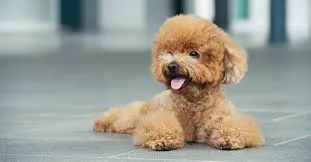In the world of cute and quirky pets, few can match the curiosity and charm of a dog that looks like a panda. These fluffy companions have captured the hearts of social media users and pet lovers alike. With their distinctive black-and-white fur pattern and cuddly appearance, they resemble China’s national treasure, the panda bear—but don’t be fooled! They’re not wild animals—they’re domesticated dogs with a clever makeover.
This article dives into what makes these dogs so unique, how they get their panda-like appearance, the breeds involved, and the controversy surrounding their rising popularity.
What Exactly Is This “Panda” Look?
The term doesn’t refer to a specific breed. Instead, it refers to a grooming and coloring technique applied to certain dogs—usually fluffy and white-coated breeds—to resemble a panda. These dogs are often dyed using pet-safe, temporary dyes to achieve the iconic black circles around their eyes, black patches on their ears, and a two-tone coat.
Though often called by this nickname, it’s important to note that this is a style rather than a natural breed or mutation.
Breeds Commonly Styled This Way
Not every dog can pull off the panda-inspired look. Breeds that already have the right build, fluffiness, and coat color are more likely to be transformed successfully.
Some of the most common breeds used include:
- Chow Chow: The most famous “panda dogs” are dyed Chow Chows due to their thick coats and round faces. Their calm demeanor and fluffy fur make them the ideal candidates.
- Samoyed: With their dense white fur, Samoyeds offer the perfect blank canvas for panda-like coloration.
- Pomeranian: Though smaller, these dogs can sport the look and charm of a mini panda with proper styling.
- Bichon Frise: Their curly, plush coat holds dye well, and their size makes them easy to groom into the desired style.
Where Did This Trend Start?
The trend gained global attention from China, where breeders and pet grooming salons began showcasing dogs styled like pandas. In particular, a pet store in Chengdu made headlines when it began offering these dogs, which quickly went viral. Photos of these adorable canines sparked debates, admiration, and questions from dog lovers around the world.
Since then, the concept has spread to other parts of Asia and even to some Western countries, especially among pet influencers looking to create a standout look for their furry companions.
Is It Safe for Dogs?
One of the most frequently asked questions about this trend is whether it’s ethical and safe for the animals. The answer depends largely on how the transformation is done.
Safe practices include:
- Using non-toxic, pet-safe dyes
- Consulting professional groomers
- Ensuring the dog’s skin and coat are not irritated
- Avoiding harsh chemicals or permanent dyes
Unsafe practices to avoid:
- DIY dyeing using human hair products
- Repeated dyeing that causes skin sensitivity
- Grooming in hot or stressful conditions
Many animal welfare organizations advise against dyeing pets for aesthetic purposes, even with safe dyes, as the process can cause unnecessary stress or health issues if not done properly.
Why Do People Want Dogs That Look Like Pandas?
There’s no denying the visual appeal. Panda-like dogs are incredibly photogenic and make a strong impression wherever they go. Pet parents and social media influencers enjoy showcasing them for attention, likes, and shares.
Other reasons include:
- Unique appearance – They stand out from the crowd.
- Great conversation starters – Owners enjoy the attention these pets receive.
- Visual novelty for kids – Many children adore pandas and love dogs, making this a winning combination.
However, responsible ownership should always prioritize the well-being of the dog over appearance or trends.
Are These Dogs for Sale?
Some pet shops, especially in parts of Asia, offer dogs that have already been groomed to resemble pandas. Others offer grooming services for existing pets. While it’s possible to purchase such dogs, it’s essential to ensure you’re buying or adopting from ethical, humane breeders or shelters.
Remember, the appearance is temporary—hair grows, dyes fade, and regular grooming is required to maintain the look.
The Panda-Like Personality?
While the look is purely cosmetic, many of the breeds commonly styled in this way have personalities to match the cuddly appearance. Chow Chows, for example, are known to be independent and calm, but also fiercely loyal. Samoyeds are playful and sociable, and Pomeranians are lively and affectionate.
Regardless of how they look, it’s their temperament and how you raise them that ultimately matters in the pet-owner relationship.
Criticism and Ethical Concerns
While the trend is undeniably cute, it hasn’t come without backlash. Animal rights activists have raised concerns about:
- Using animals for aesthetic fads
- Potential harm from chemical dyes
- Unnatural grooming habits affecting dogs’ comfort
In some cases, excessive grooming can lead to skin infections, allergic reactions, and stress. Critics argue that dogs should be loved for their natural beauty and not treated as living fashion accessories.
Alternatives to Consider
If you love the panda look but want to avoid any grooming-related risks, there are plenty of panda-themed dog accessories to consider:
- Panda-print sweaters and T-shirts
- Harnesses and collars with panda motifs
- Panda-styled plush toys
- Photo-editing filters for pet photos
These allow your pup to join the trend without any compromise to their safety or comfort.
Final Thoughts: Cute Trend, But Know the Facts
There’s no denying the viral charm of a dog that resembles a panda. Their fluffy coats, paired with black-and-white markings, can melt hearts and spark conversations. But behind every trend is a responsibility—to ensure your pet’s health, happiness, and dignity are always prioritized.
If you’re thinking of getting a “panda dog,” make sure you’re informed, cautious, and compassionate. Choose safe grooming practices, or better yet, celebrate your dog’s natural beauty while letting their personality shine brighter than any fur pattern.



